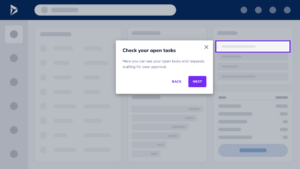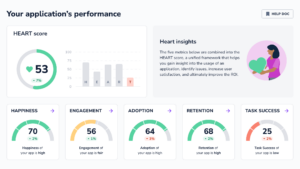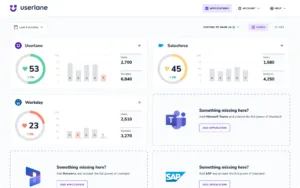Best practices to budgeting and licensing with a DAP

A key factor in the success of deploying a Digital Adoption Platform (DAP) is budgeting. The interaction between ownership models and licensing options becomes essential. This article delves into these key elements, offering insights into practical budgeting and licensing strategies.
Table of Contents
Budgeting
The budget ownership model for Userlane in a large enterprise will directly influence the pace of DAP deployment and its success. There are a few potential models:
- Centralized Budget Ownership: This model is where a central body, such as the IT department, owns the entire DAP budget. They are responsible for purchasing the Userlane licenses and covering the costs of creating guides for all departments. While this model can streamline budgeting and ensure uniform DAP implementation, it can also lead to potential bottlenecks and a lack of flexibility for individual departments.
- Decentralized Budget Ownership: Each department owns its portion of the DAP budget in this model. They are responsible for their part of the Userlane license cost and for creating their content. While this model allows departments greater flexibility and can encourage active participation, it can also lead to inconsistencies in DAP deployment across the enterprise.
Licensing
When considering the budget for a Digital Adoption Platform (DAP) like Userlane, enterprises have several options based on their needs, financial considerations, and budgeting approach. Here are three common budgeting options which can be implemented in a centralized, decentralized, or hybrid manner:
- Single Application Licenses: In this model, the enterprise selects specific applications, such as Salesforce, SAP, or Workday, for which they require Userlane’s DAP capabilities. The pricing is based on a per-application basis, allowing the enterprise to tailor the solution to their immediate needs.

- Multiple Application Licenses: This option offers a cost-effective approach for enterprises that require DAP support for 5-15 applications. Instead of purchasing individual licenses for each application, the enterprise can opt for bulk packages that cover a set of applications.

- Enterprise License Agreement: An enterprise-wide license agreement (ELA) provides the highest level of flexibility and coverage. With an unlimited enterprise license, the organization can deploy Userlane across all applications and for all users without additional individual licenses or package restrictions.

Recommendations
Based on the analysis of budgeting structures and licensing options, it is recommended to initially consider a multi-application license model with a central budgeting structure for most organizations.
A multi-application license allows organizations to benefit from cost efficiencies by covering multiple applications under a single license agreement. This provides flexibility in DAP adoption across various applications, ensuring consistent user experiences and central oversight. It also enables streamlined licensing management, avoiding complexity arising from individual single-application licenses.
A central budgeting structure is highly recommended for most organizations. This approach ensures that DAP initiatives are strategically aligned with the organization’s goals and resources are efficiently managed. By consolidating the budget under a centralized authority, most commonly within the IT organization, companies can maximize the value derived from the DAP, streamline decision-making, and facilitate a cohesive and successful DAP implementation across departments.
As DAP usage and adoption grow, an ELA with Userlane is the ideal model for a global rollout. This transition to an ELA allows unlimited DAP access across all applications, providing scalability and cost predictability. Ultimately, the recommendation may vary based on the organization’s specific needs, size, and complexity.
By incorporating these elements into their approach, enterprises can guide their DAP initiatives with confidence, leading them towards a future characterized by optimized processes, improved user experiences, and a measurable return on investment from software expenditures.

